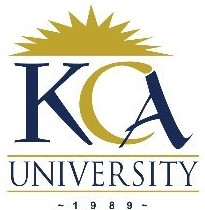
UNIVERSITY EXAMINATIONS: 2012/2013
SECOND YEAR EXAMINATION FOR THE BACHELOR OF
SCIENCE IN INFORMATION TECHNOLOGY
BIT 2201 SIMULATION AND MODELLING
DATE: DECEMBER, 2012 TIME: 2 HOURS
INSTRUCTIONS: Answer Question ONE and any other TWO
QUESTION ONE
a) Define the following terms: (7 Marks)
i) simulation
ii) system state variables
iii) discrete event simulation model
iv) system
v) system image
vi) simulation algorithm
vii) Poisson arrival process
b) Distinguish between verification and validation. (4 Marks)
c) Explain why animation is appropriate in explaining the behavior of a model when
it is completed. (4 Marks)
d) State five capabilities of a good simulation language. (5 Marks)
e) Use a multiplicative linear congruential random number generator with ![]()
to generate the first five random
variates on the interval (0, 1) (5 Marks)
f) With the aid of a flow chart, explain the event-to-event time advance mechanism
in a discrete event simulation model. (5 Marks)
QUESTION TWO
a) i) Define a pseudo random number generator. (2 Marks)
ii) Explain any FOUR properties of an ideal random number generator.
(12 Marks)
b) Suppose that the number of major earthquakes occurring per month in a particular
geographical area is collected for 100 months and summarized in the table below:
Number of earthquakes per
month
0 1 2 3 4
Number of months 57 31 8 3 1
Test at 5% level of significance whether the earthquakes occur randomly. Assume
a poison distribution. (6 Marks)
QUESTION THREE
a) The purpose for modeling can also have a functional level. With effective
illustrations, describe any FIVE functional levels to which simulation modeling
has been applied. (10 Marks)
b) Describe any Five ways to perform model verification. (10 Marks)
QUESYION FOUR
a) Describe any THREE advantages and TWO disadvantages of simulation and
modeling. (10 Marks)
b) A variety of subjective and objective techniques can be used to validate the
conceptual model. Briefly describe any FIVE. (10 Marks)
QUESTION FIVE
a) Most simulation programming systems include a report generator to print out
statistics gathered during the run. Describe any FIVE common required statistics,
which are usually included in the output. (10 Marks)
b) Consider a simple server queuing system that starts at time t=0. The arrivals occur
at times 1.2, 1.8, 2.6, 3.8, 6.0, 6.2, 7.0, 7.5, 8.6 and 9.2. Departures occur at times
3.0, 4.2, 4.9, 5.6 and 10. Time is in minutes. Simulate this system until when the
sixth client enters service and estimate:
i) The average delay in the waiting line (3 Marks)
ii) The average number of clients in the waiting line at any time t (6 Marks)
iii) The server utilization rate. (1 Mark)
